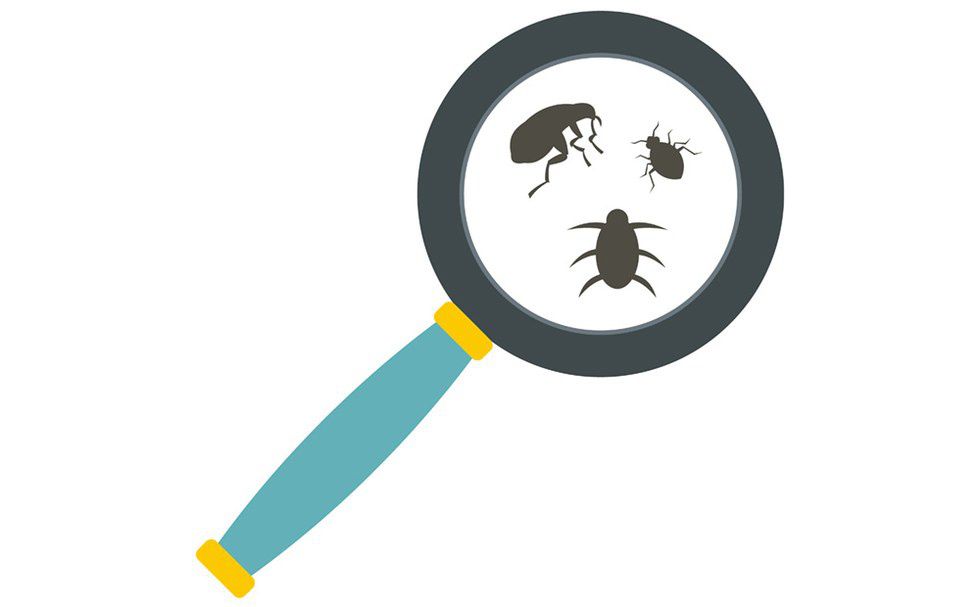The Science of Fighting Teas and Flicks
by Amy Robinson, Sniff & Barkens' Dog Expert
A few years ago, I fostered a miniature poodle named Gigi after her owner passed away. Gigi clung to her beloved Elmo stuffed animal, a large and semi-creepy depiction of the Sesame Street puppet, complete with bulging black eyes and odd, protruding eyelids that opened and closed when Elmo was tilted. It turned out that Elmo brought me a hostess gift: masses of tiny ticks embedded under his bulging eyes like clumping mascara. I learned that getting rid of the ticks on the dog was only part of the solution. Evicting them from our home took some stealth and conviction.
Managing the home environment is where most of us fall a little short. The Pesticide Research Institute recommends vacuuming any room the dog enters twice every week and using a crevice tool in corners, on baseboards, and in sofas where fleas and ticks will set up shop. Laundering bedding with hot water and soap will take off any eggs or tiny ticks that may be hiding in seams. During times of year when pests are thriving in the outdoor environment, more frequent bathing of your pet helps prevent fleas from gaining a foothold.
Both fleas and ticks are nature’s motion detectors, picking their moment to jump aboard your dog’s warm, inviting body and ride into your house. Simply being observant while brushing the dog every other day will help owners keep score, but fighting nature’s tiny vampires is a losing proposition if the dog brushes past a hedge or simply walks over a spot in the lawn where a flea-infested possum has just had a nice scratch.
Keeping a clean house will not deter fleas and ticks, so most of us turn to science for an oral or spot-on preventative. Almost all active ingredients in flea and tick preventatives work by altering the pest’s nervous system. Pyrethrins, derived from chrysanthemums, have been around for hundreds of years and work by altering the flow of sodium out of the nerve cells. Pyrethrins and their newer synthetic cousins, Pyrethroids, are also found in room sprays, foggers, and flying insect sprays. New players entering the market bring newer active ingredients, such as Fipronil, part of a group of synthetic insecticides called aryl heterocycles that block the passage of chlorine through cells in the insect’s nervous system, causing paralysis. Fluralaner, given orally, belongs to a new class of compounds with antiparasitic activity called isoxazolines. According to a scientific study at Shimane University in Japan, isoxazolines have significant selectivity for insect neurons over mammalian neurons, focusing its toxicity on the pest while minimizing the effect on the dog.
Why do we need so many different formulas and active ingredients? Are fleas and ticks becoming immune to some compounds?
“It is true that the longer active ingredients are used to control insect or parasite pests like ticks, the greater chance that resistance can start to build,” notes W. Lance H. Hemsarth, Senior Director of Research and Development at The Hartz Mountain Corporation. “But no resistant strains of parasites have been identified to current active Ingredients used for years in topical products.”
Scientists looking for some new weapons in the fight against fleas and ticks are turning to insect growth regulators (IGRs) and synergistic compounds to pack a one-two punch. The Hartz Corporation uses Etofenprox, which has had less exposure to parasite populations and thus would be less likely to develop parasite resistance over time, as the active ingredient in their UltraGuard Pro spot-on, along with the synergist Piperonyl Butoxide (PBO). PBO was developed by researchers in 1947 using naturally-occurring safrole as a key raw material. According to the National Pesticide Information Center at Oregon State University, PBO inhibits breakdown of pesticides by insects, thereby preserving the active ingredient’s effectiveness and reducing the amount of pesticide required in order to be effective.
Spot-on treatments are still the most popular method to fight fleas and ticks for owners who don’t want pesticide directly entering the dog’s bloodstream, such as treatments that come in pill form. But spot-on application has to be done with attention to detail.
“Topical products are formulated to be absorbed into the oil glands of the skin after application,” notes Dr. Georgette Wilson, DVM and Director of Scientific and Medical Affairs at The Hartz Mountain Corporation. “These oil glands then serve as reservoirs that slowly release the product throughout the duration of the treatment period, which for most products is one month.”
Whether the dog is long-haired or short will not alter the efficacy of the treatment, as long as the treatment reaches the base of the hair at the follicle level where the skin’s natural oils distribute the product throughout the skin’s surface. Any spillage into the hair is not doing its job and can be difficult to remove. Pet owners should wash their hands after application.
The billions of dollars spent in research and development, manufacturing, and compliance is considered money well spent when it comes to preserving public health. There are substantial risks to humans when fleas and ticks get a foothold. While the most common species of flea known to inhabit dogs is Ctenocephalies felis, ironically named the cat flea, other species of fleas found on rodents are involved in the transmission of plague and murine typhus. The female Chigoe flea can be found on coastal beaches and burrows into tender flesh between toes or into the soles of the feet. There, the 1-mm long females become embedded, begin to suck blood, and eventually develop eggs. Sites of infestation may become infected with bacteria and, if untreated, may eventually even require amputation.
Tick-borne illnesses have their own top ten list, including Borrelia mayonii, a new bacteria species that is the only species besides B. burgdorferi known to cause Lyme disease in North America. Powassan (POW) virus is seen in the Great Lakes and Northeastern U.S. and sometimes requires supportive in-hospital care in severe cases. Rickettsia rickettsii, the agent of Rocky Mountain spotted fever (RMSF) and several other tick-borne species of Rickettsia affect people in Europe, Africa, and Australia.
As long as we live in close proximity with pets, scientists will continue to fight blood-hungry fleas and ticks with a wide array of weapons developed in the laboratory.
This content was sponsored by Hartz.






















